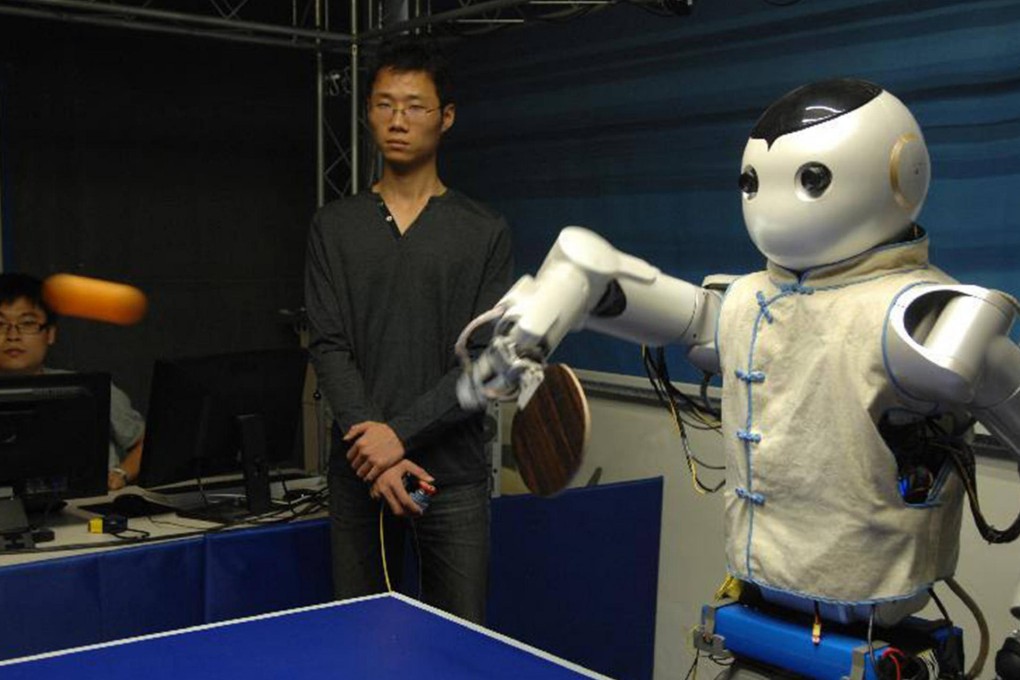Scientists teach ping-pong robots to master spin
Humans can master the art of spin and outwit the machines - but maybe not for much longer

The world could be just two years away from the first serious showdown between a robot and a top-flight ping-pong player with a mainland breakthrough in high-speed vision in robots.

Professor Xiong Rong with the university's Institute of Cyber-Systems and Control said the team had found a way to track an ordinary ping-pong ball in full spin. Using data such as the ball's rotational speed and axis, their robot was able to make a precise estimate on the ball's movement after striking the table.
Spin on the ball is one of the most important weapons in table tennis, and a nightmare for robotic scientists to track. Robotic teams worldwide have been trying to come up with various prototypes of ping-pong robots for a couple of decades, but none could deal with the spin, as the estimates of the ball's speed or trajectory were often way off.
Xiong's team came up with a creative solution. They followed the brand logo, which is printed on every ping-pong ball, with high-speed, high-definition cameras, and by analysing the movement of the logo, they obtained high-quality data on the physics of the ball's spin.
Each camera produced more than 120 images per second, and their computer analysed hundreds of high-resolution photos taken in the blink of an eye to keep up with the intense pace of a game.